|
|
Safe sides or support.
You learn whether the sides of your excavation will be safe or whether they will need support primarily from your professional, detailed, sufficiently wide-ranging soil investigation report.
I have a page 
You do not learn how to make the sides of your excavation, with your unique set of circumstances, from the examples I show you here.
However, I hope you learn a little more from them.
|
|
|
Some soil conditions might always be stable
but that doesn't mean they will support your neighbour's two storey house only 2m away without support.
Many soils are stable to begin with but become unstable as you get deeper or when it rains heavily.
Quite often, the original soil a bit deeper down is stable, but when the site was originally developed a hollow was filled in then topsoil spread on top. You could have a metre of loose ground before you find undisturbed soil a lot more stable.
You might have wonderful, stable. draining gravel. But at some point you might have clay. Rain water will flow downhill where the two meet. If you dig in to the clay, your gravel will wash out.
Almost the worst soil is a mixture or lots of different layers. Some silty, some gravelly, some clayey, coal sometimes, because it looks stable when you dig it, but as the weeks go by it creeps towards you.
Or you might have solid limestone.
You can dig a basement excavation with a 13 tonne excavator that loads the lorries beside or behind him. This is cheap.
If you get cave-ins or the soil creeps too near you cannot work, you are trying to get to the bottom with a little digger that can't sit very far back or pull much out. It gets dangerous and takes weeks sometimes.
First, some examples where they had to dig more out after they started to build.
You can see that this first guy dug his excavation a bit small. It survived the floor slab and well into the wall formwork. But then it caved in all round and they had to either dig out largely by hand or sacrifice the timber.
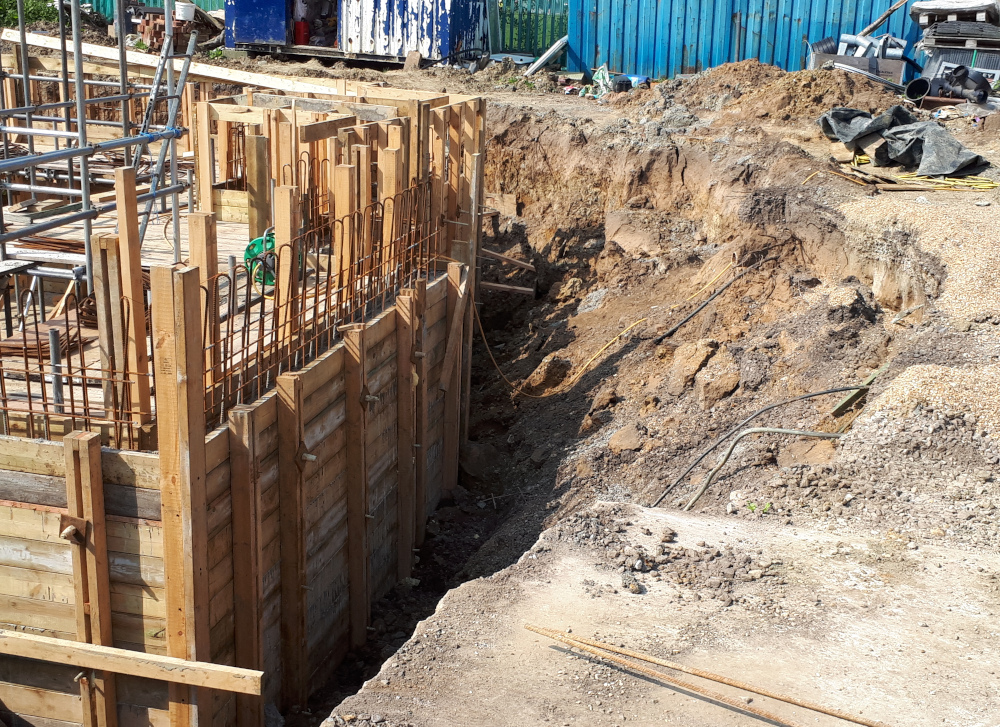
This self-builder argued for months by email that he didn't need a soil investigation report because he had a local borehole company drill one hole and give him their opinion, and the opinions of other locals in the excavation business.
But the excavator operator, as soon as he arrived, knew it wasn't good. He excavated very carefully but the sides were not stable.
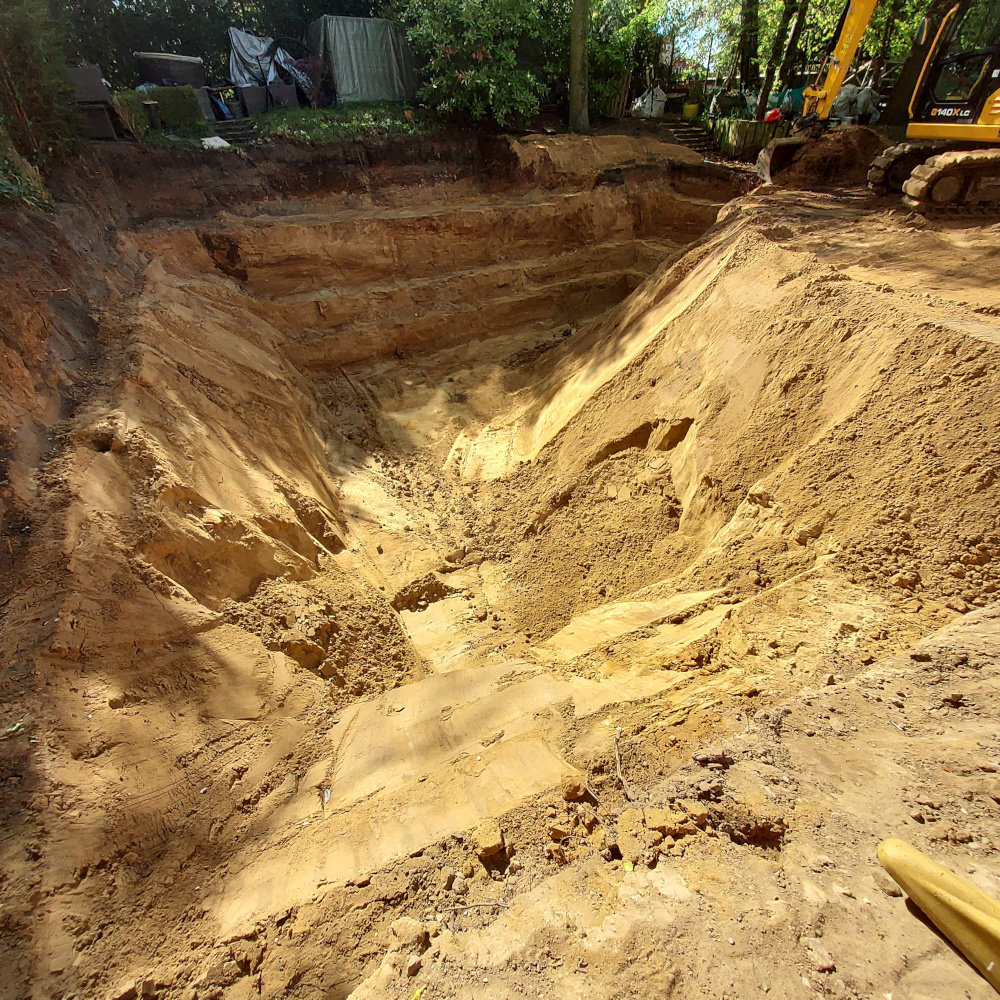
He wanted to fill it in and leave, but his boss told him to continue, very slowly.
All the time the self-builder pushed against expert advice whilst also claiming he would never put anyone in danger.
The local excavation man came to look and announced he had told the self-builder he would probably need to shore up the sides. The self-builder responded he hadn't told him he would definitely have to shore up the sides.
The self-builder decided to make the basement a bit smaller. Over the weekend when neither I or the excavator driver were there, he had labour build a blockwork wall.

On the Monday, I told him the cement isn't hard yet, it needs weeks to gain strength; and it won't work. The structural engineer has designed what's needed. 300mm thick concrete with steel reinforcement.
And after a few days of sand trickling down behind it, a part fell over. Fortunately we saw it going and everyone stepped back in good time.
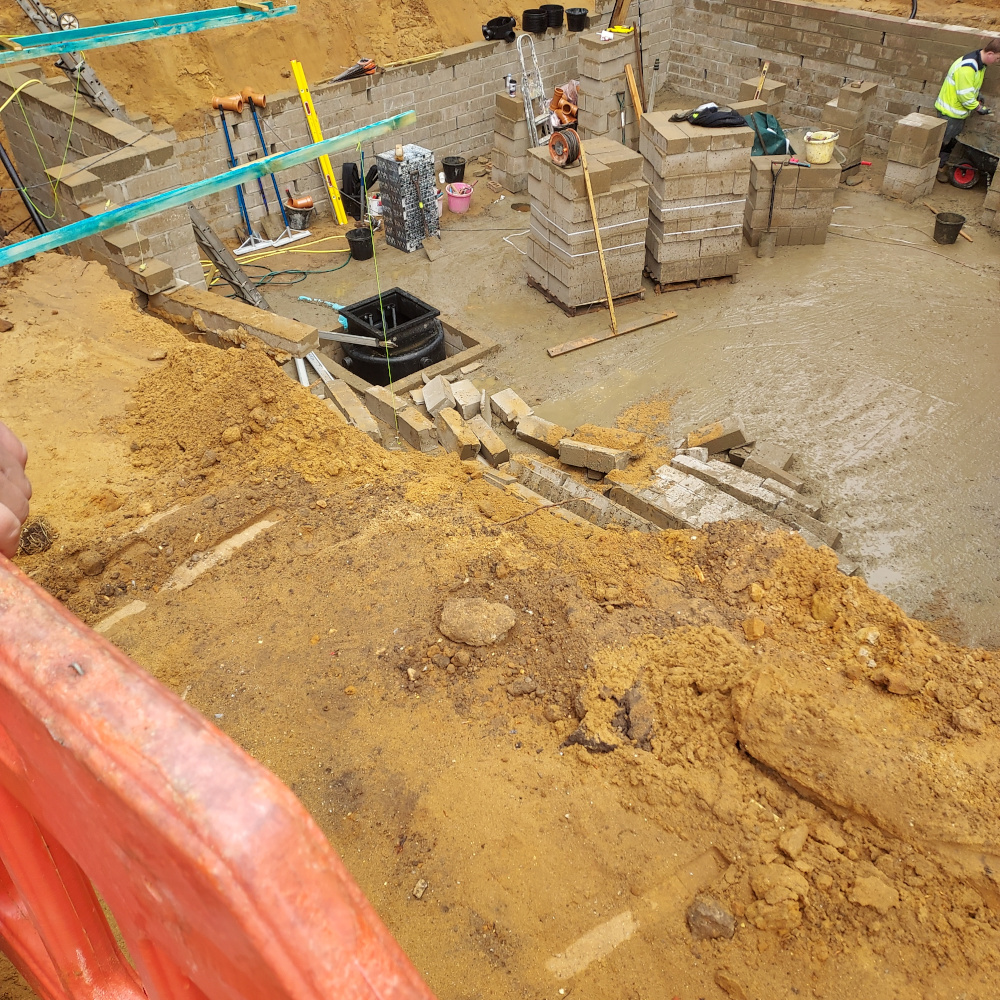
He had already bought Armco that didn't work. he tried to hold some up with steel reinforcement bars. How or why he thought that sand would hold thin bars with a tonne of loose sand above it, I don't know.
It had become clear my opinion was having no effect and he wanted to carry all the steel mesh down the loose-sand slope without any concrete that would have at least made it a bit safer and improve grip.
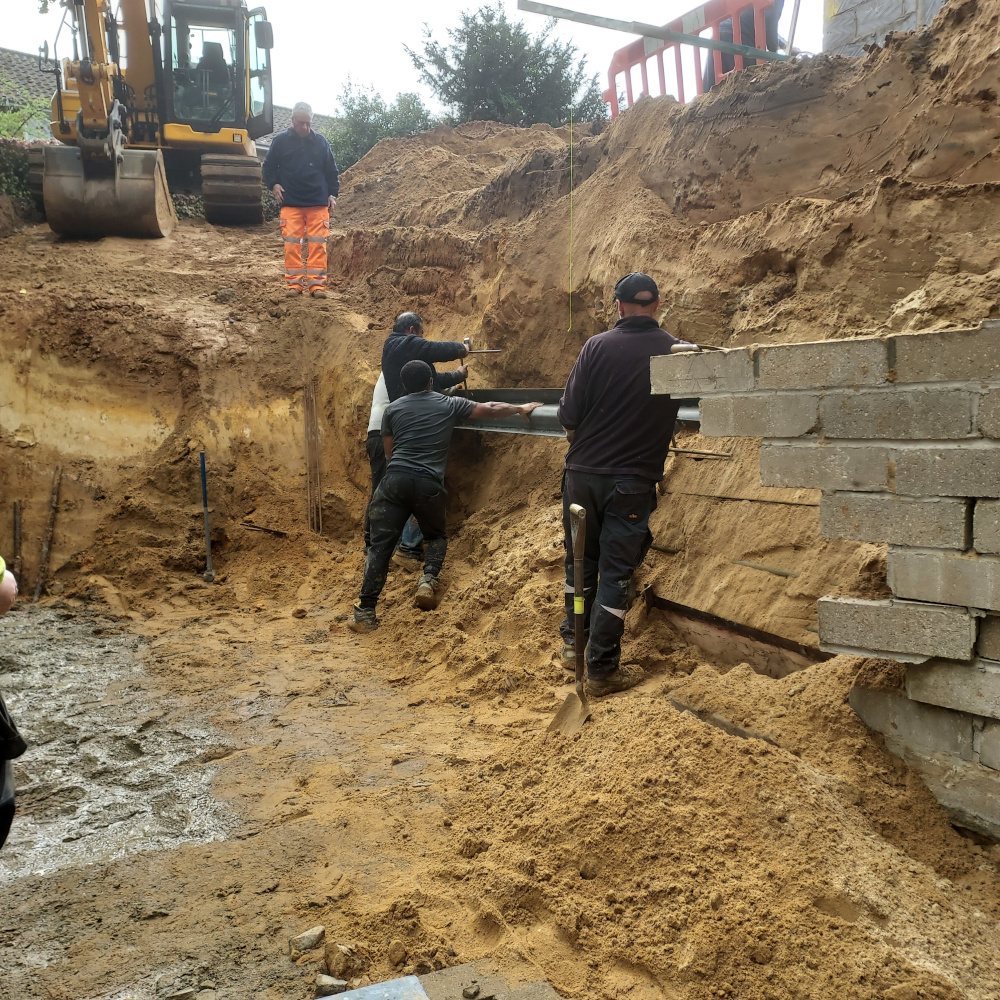
I left and reported him to the Health and Safety Executive, but I never heard a word back despite their acknowledgement saying I would.
Quite often it can go the other way.
The structural engineer on this project, about 5 years earlier, told us what he wanted us to do. This was also sand but the sand wasn't loose until it was disturbed and it became stronger with depth.
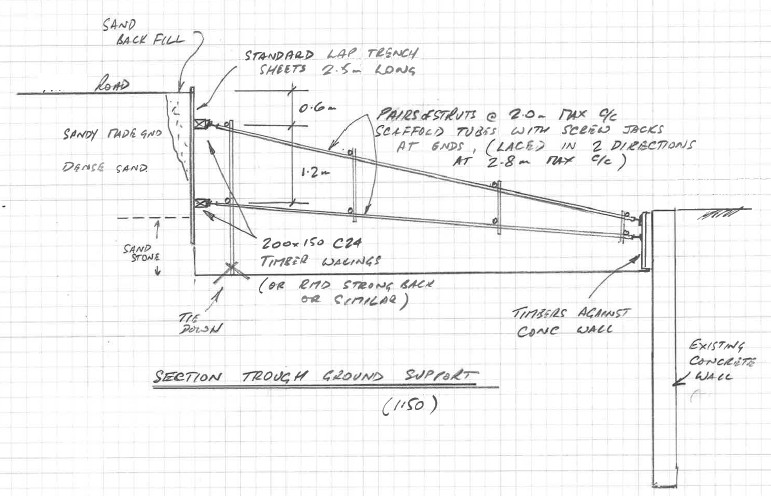
The first problem was he wanted this arrangement so often with narrow spacing in between it would have been impossible to dig. Not even enough room to swing a pick axe.
We approached one of the temporary works suppliers, but their solution was ridiculously expensive.
We closed off the pavement and a third of the road over a very short distance that didn't require traffic lights and built a small section of our basement.
Then we moved the partial road closure along a little bit and built a bit more. And so on until it was complete.
It was also handy that we put up a hoarding that no one could see through unless we had a lorry turn up.
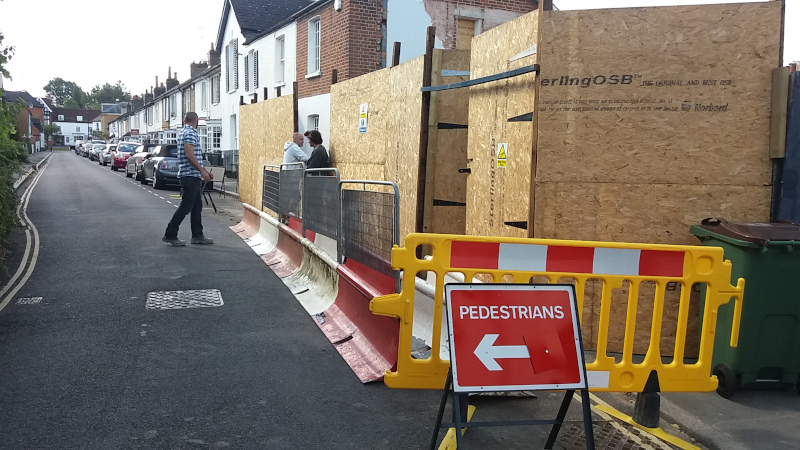
We had no obstruction and the excavator could work from one end, pile the spoil behind him and a grab lorry sit where we hadn't excavated or blocked the road to take spoil away.>
This is very usual. Piling down both sides but not the front or back.
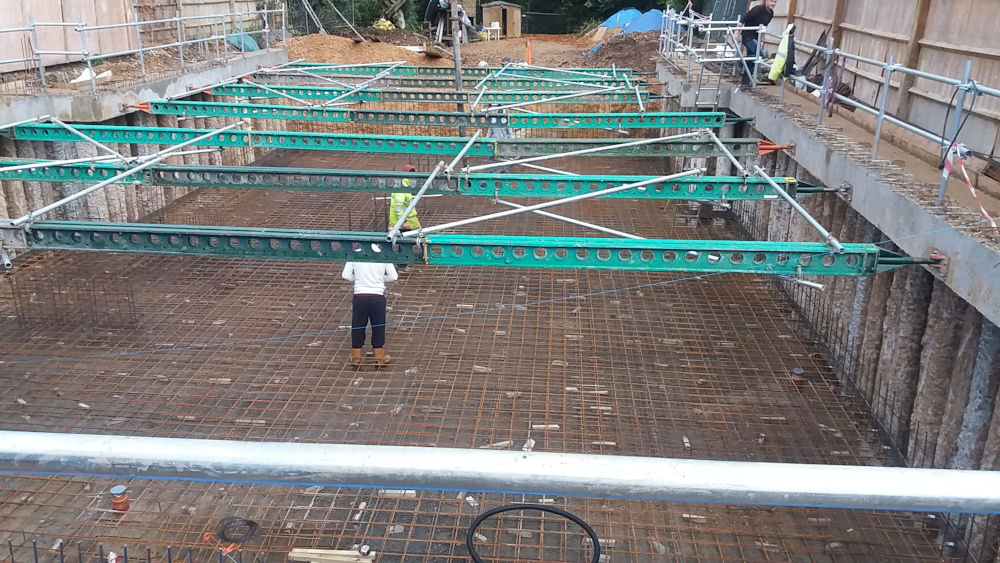
There some other examples of soil types and photos on my soil investigation page.

Back to the Basement Building Questions Answered menu.
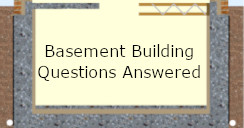
|
Back to the Basement Building Construction Manual menu.
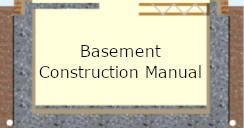
|
For a fixed fee of £199 I will answer all your questions by email. More details here.

|
|
|
|

